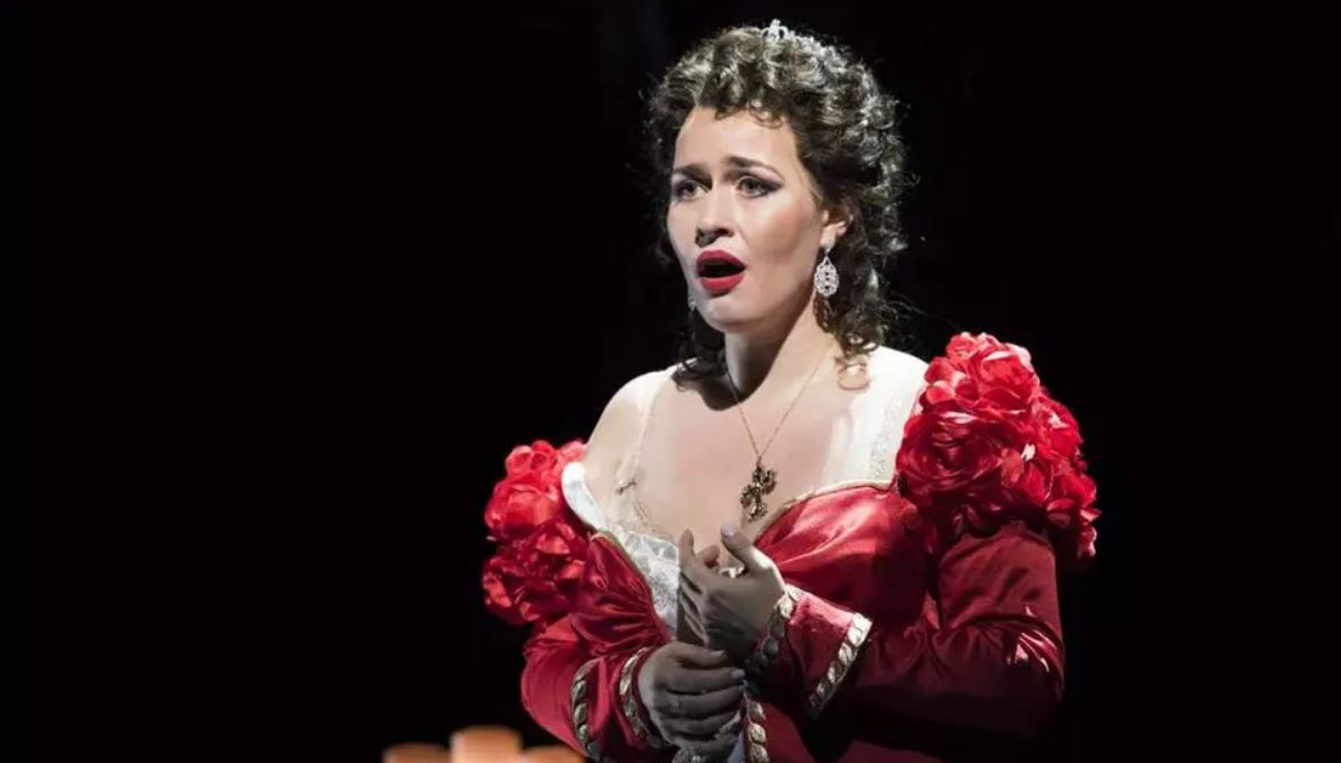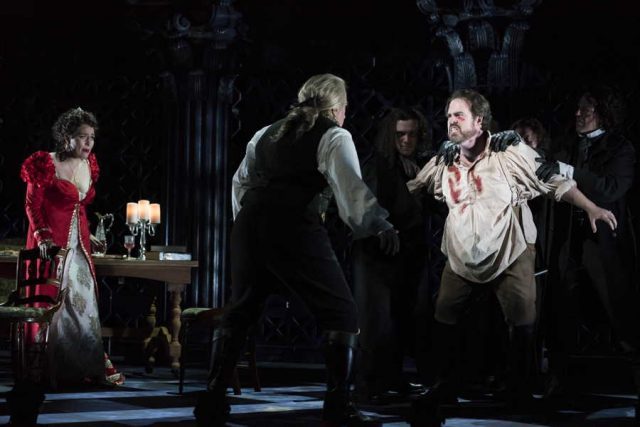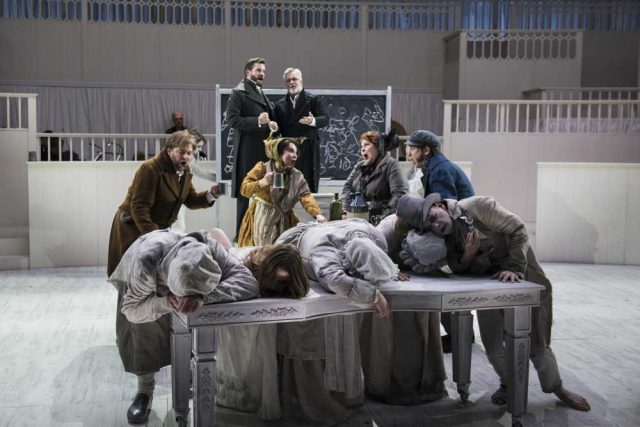Carl J. Rosenberg
Principal Emeritus

In the design of spaces for musical performance, we acousticians take into account the volume of a hall, the expected reverberation time, the attributes of reflecting and sound absorbing materials, the enclosure and surfaces near to performers, and innumerable other factors, all working in concert with architects and theater planners. As acousticians we relish the challenge and opportunity of tackling the fixed physical attributes that pertain to all types of performance spaces.
Within the performance of opera, there is an added dimension that must be considered, and that is the stage set itself, which has a profound impact on the acoustical experience. Most stage designers who are creating the visual work in a regular opera theater will take into account the sound-reflecting nature of hard surfaces near the singers and use these elements to help carry singers’ voices out to the audience. But unfortunately, this luxury is not always available. Recently, I had the opportunity to work with production staff of Boston Lyric Opera to influence the acoustics of the performance in a way that the audience was totally unaware.

For Tosca, the orchestra was surroundded by sound-reflecting surfaces and placed behind a transparent scrim, which was also used as a surface to project images of Roman scenery.
The first challenge was the season’s opening production of Tosca, Puccini’s beautiful and stirring tale of intrigue, love, deceit and tragedy set in Rome in 1800. BLO does not have its own home venue at this time, so the production was presented in Emerson College’s beautiful Cutler Majestic Theater. To bring the full operatic experience to the production, BLO chose to use a 59-piece orchestra, as envisioned by Puccini over 100 years ago. But the theater, built in 1903 and elegantly renovated in 2003, has an orchestra pit capable of fitting only 35 musicians. The clever solution proposed by the creative team, including BLO’s Music Director David Angus, was to put the orchestra on a platform above the stage and to cover the now empty pit with sturdy coverings to create a stage extension in front of the proscenium. To assure a well-balanced projection of the orchestra, I worked with the production staff to incorporate surfaces around the musicians. These were designed and constructed of hard sound-reflecting surfaces. The orchestra was hidden behind a sound transparent scrim (which also became part of the stage setting itself, serving as the surface for projected images of the Roman locations of the opera).
An added benefit of this arrangement was that the singers were brought forward closer to the audience, and this established an exciting sense of intimacy while the orchestral sound was well balanced with the singers. This configuration also alters the traditional relationship of a conductor looking simultaneously at musicians (in a pit) and performers (on stage). To make up for the fact that the conductor was now behind the performers, the coordination between the conductor and the singers was done with a series of video feeds, not the direct communication that is typically desired.

For “The Nefarious, Immoral, But Highly Profitable Enterprise of Mr. Burke & Mr. Hare,” the orchestra was placed at the back of the set in a pseudo-orchestra pit, as seen here.
Another challenging experience was the recent production of a modern opera, “The Nefarious, Immoral but Highly Profitable Enterprise of Mr. Burke & Mr. Hare.” But, this was more than a typical production—this was actually the world premiere of this opera. BLO chose to use the Cyclorama at Boston Center as its stage for this exciting debut. Built in 1884, this building was originally a home to a 360-degree panorama of the Civil War’s Gettysburg battle, but now hosts a myriad of different events. This empty circular room is fraught with acoustical problems for live performance: it has a large volume and features nothing but hard surfaces, creating focusing, reverberation, and echoes—all of which are anathema to musical presentations. In working with the stage designers, our team conceived of a set that incorporated much-needed absorption with the 450-seat audience, and further treatments in and around the orchestra setting at the back of the stage. The design of this pseudo-orchestra pit helped balance the different elements of the orchestra and regulated the sound levels with the singers as to not overpower them.
In both these cases, the acoustical solutions were incorporated directly into the stage sets of the performances in creative and imaginative ways, and the opera experience was maintained. Ultimately, the end goal of these projects were met: the audience was able to enjoy the acoustical character of the operas without realizing the unusual challenges of the design of the stage sets.
A special thanks to the BLO for providing input on this piece and for sharing photos of these incredible performances.